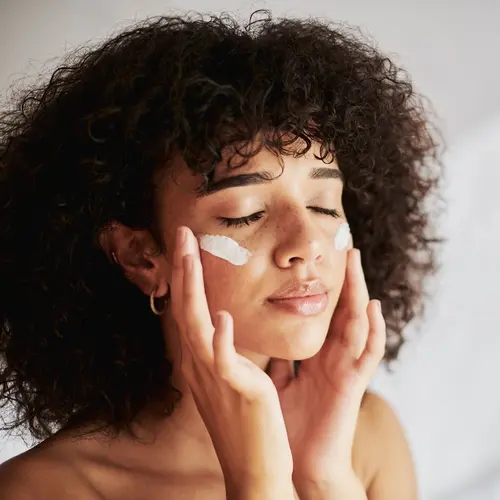Your feet move you through the world, help you stand up to your day, and ground you. They also need TLC to keep them soft, strong, and free of problems.
These 6 steps will help your feet stay fabulous.
1. Smooth It Out.
Make it a habit to use a pumice stone or foot file on damp heels and calluses. Doing so will keep your feet looking good in open-back shoes.
First, soak your feet in water or a foot bath for 10 to 15 minutes to help soften the skin. Then gently remove the thickened skin with a pumice stone. New York podiatrist Isaac Tabari, DPM, recommends a warm foot bath made of black tea (tannic acid). Tannic acid, he says, is a natural antibacterial agent that may reduce the chance of getting athlete’s foot.
Moisturizing foot scrubs made from botanicals such as crushed fruit pits, sugar, or chemical exfoliators also help remove dead skin. After you scrub, apply a rich foot cream or balm containing shea butter or cocoa butter.
- Look for balms or heel creams containing salicylic acid or urea to soften tough calluses.
2. Moisturize.
If your heels are very dry and cracked, see a podiatrist or dermatologist for a prescription treatment. If they’re not that bad, there are plenty of moisturizing products from which to choose.
First, you might try some medicated heel pads, which don't need a prescription, to soften calluses while you walk. After you’ve exfoliated the calluses, use a heavy cream to moisturize tough skin on your heel.
- Look for creams containing petrolatum, an emollient, or a humectant such as lactic acid, which draws moisture into the skin.
3. Fight Fungus.
Over-the-counter antifungal treatments come in many forms -- lacquers, creams, lotions, liquids, spray powders, and spray liquids. These products work best on mild cases of athlete’s foot, and probably not at all with toenail fungus, which is difficult to treat.
No matter the form, they have one of the following active ingredients, which are all equally effective: terbinafine, tolnaftate, miconazole, ciclopirox, or clotrimazole. Tabari says tea tree oil, sometimes called melaleuca oil, also works well on mild cases of athlete’s foot.
- Look for a medicated powder or spray if you have sweaty feet. Powders usually contain aluminum chloride hexahydrate to help keep feet dry.
- If you have dry feet, look for an antifungal lotion.
Dry your feet thoroughly before you apply antifungal powder or lotion.
Dark and damp conditions let the funguses that cause athlete’s foot flourish. Basic good foot hygiene is the best way to prevent fungal infections. Wash your feet frequently and dry them thoroughly, especially between your toes. Wear fresh socks or other hosiery daily.
4. Wear Sunscreen.
Wear sunscreen on the tops of your feet. Apply a broad-spectrum sunscreen with an SPF of at least 30 to your feet when you're going barefoot or wearing open sandals.
5. Get Support.
Standing for a long time can make your feet sore. Wearing insoles can help make shoes more comfortable.
- Look for insoles that have a plastic shell at the bottom. Podiatrists say the shell makes them strong enough to provide real support.
6. Don’t Forget Your Toenails!
Love getting pedicures? The technique matters. Clumsy trimming can lead to hangnails and ingrown toenails.
Also, make sure the nail technician gently pushes back the cuticle rather than cuts it, which can lead to an infection.
- If you do your own nails, look for nail “nippers” that have a curved handle and a cutting jaw shaped to follow the natural curve of nails.
Your nails naturally become more brittle with age. Ingredients in some nail polish and polish remover can speed the process, drying out your nails. Elle, a celebrity manicurist who writes a blog for Barielle Cosmetics, suggests her clients use polish that is free of formaldehyde, toluene, and dibutyl phthalate. She also recommends using a nail polish remover free of alcohol.
To moisturize your toenails, Elle suggests using a cuticle cream, petroleum jelly, or vitamin E oil. Put it over the entire nail, including the cuticle, and gently rub it in.


